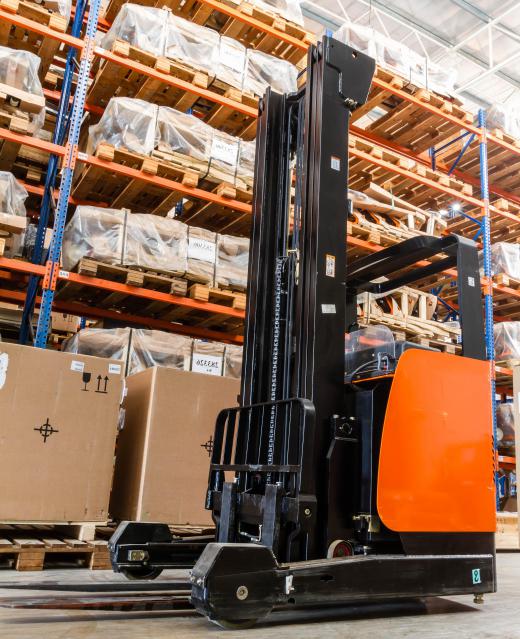A counterbalance forklift is a type of forklift that uses a large counterweight to offset the weight lifted by the forks. The counterbalance forklift uses a heavy cast iron weight attached to the rear of the machine and will typically use the battery pack of an electric lift as part of the counterbalance system. On large versions of the counterbalance forklift, soft rubber rear tires will commonly be filled with chloride, a type of salt water, to add weight to the rear of the forklift. By adding weight to the rear of the forklift, the lifting capacity of the machine is greatly increased.
When a forklift raises a heavy object into the air, the rear of the forklift becomes very light, as the weight on the forks attempts to rotate the forklift over the front tires. A counterbalance forklift places weight on the rear to counter the tipping pressure on the front axle, thereby allowing the forklift to remain level. Occasionally, even a counterbalance forklift will lift a weight heavy enough to make the machine become light on the rear tires. This can be a dangerous occurrence, as the forklift uses the rear tires to steer the machine. By overloading the forks, an operator places himself in danger by creating a roll-over condition.

It is critical that the counterbalance forklift operator knows the lifting capacity of his forklift as well as the estimated weight of the load to be lifted. The hydraulic system of the counterbalance forklift is commonly powerful enough to lift a greater capacity than the forklift is rated to safely lift. Having an excessively heavy load hoisted high in the air is not a good time to discover the forklift is overloaded. When the weight of a load is unknown, it is common for a forklift operator to slightly raise the load, then suddenly apply the brakes while rolling forward. Any sensation of the rear of the forklift rising is grounds to get a larger and heavier forklift to lift the load.
One problem with an excessively large counterbalance is that it requires a larger area to maneuver the machine. The counterbalance forklift can often bump into racks and other objects as the operator attempts to swing it into a narrow corridor to place a load on a rack or shelf. Using rounded corners on the rear of the counterbalance forklift aids in turning sharply in areas with tight tolerances.
